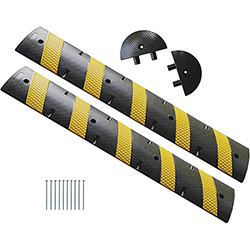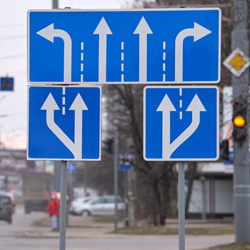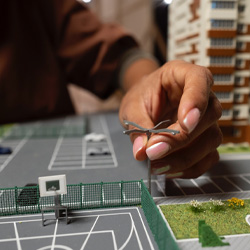Category Archives: Traffic Safety
The Importance of Speed Bumps near Schools for Road Safety
¡Road safety near schools is of utmost importance in ensuring the well-being of students and the community as a whole. With the increasing number of vehicles on the road, it is crucial to implement effective measures to protect the lives of young pedestrians. Speed bumps play a vital role in controlling vehicle speed and encouraging drivers to be more cautious in school zones. By slowing down traffic, speed bumps create a safer environment for children to cross the road and for parents to drop off and pick up their kids. Moreover, speed bumps also serve as a visual reminder for drivers to be mindful of their surroundings and to prioritize the safety of school-going children. In this article, we will delve deeper into the significance of speed bumps near schools and explore the various benefits they offer in enhancing road safety.
Continue reading “The Importance of Speed Bumps near Schools for Road Safety” »
How Policy Can Shape Traffic Calming Measures: A Focus on School Zones
Traffic calming measures are strategies implemented to reduce vehicle speeds and improve safety on roads. These measures are particularly important in school zones, where the safety of children is a top priority. By implementing traffic calming measures such as speed bumps, crosswalks, and reduced speed limits, the risk of accidents and injuries can be significantly reduced. This article explores how policies can play a crucial role in shaping traffic calming measures in school zones, ensuring the safety of students and promoting a conducive environment for learning.
Continue reading “How Policy Can Shape Traffic Calming Measures: A Focus on School Zones” »
Case Studies: Effectiveness of Different Speed Reduction Strategies in School Zones
In this article, we will explore the effectiveness of various speed reduction strategies implemented in school zones. With the aim of ensuring the safety of children, school zones are designated areas where drivers are required to reduce their speed. However, the effectiveness of different strategies in achieving this goal may vary. By analyzing case studies, we will examine the outcomes of various speed reduction methods, such as speed bumps, signage, and traffic cameras. This research will provide valuable insights into the most effective strategies for promoting safer school zones.
Continue reading “Case Studies: Effectiveness of Different Speed Reduction Strategies in School Zones” »










